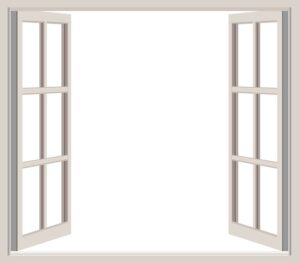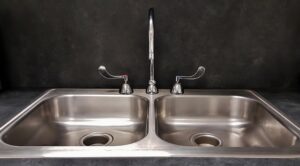Energy-Savvy Window Upgrades: A Guide for Eco-Conscious Homeowners
High-performance windows significantly enhance a home's energy efficiency by acting as barriers…….

High-performance windows significantly enhance a home's energy efficiency by acting as barriers to environmental elements, retaining conditioned air, and offering options like double or triple-pane glass to minimize heat transfer. Advanced materials such as vinyl or fiberglass for window frames provide better insulation than wood or aluminum, and features like argon gas between panes improve thermal performance. Understanding and selecting windows based on U-factor and Solar Heat Gain Coefficient (SHGC) ratings is essential for maintaining comfort and aligning with specific climates. Modern window technology includes specialized glazes that reflect infrared light while allowing visible light in, reducing heat transfer and energy costs year-round. Low-E coatings protect interiors from UV rays while maximizing natural light. Homeowners should evaluate their current windows for performance, consider the orientation and shading of windows for passive solar heating, and opt for Energy Star rated windows tailored to their region's climate. When selecting a contractor for window replacement, it's important to choose one with expertise in energy-efficient window technologies, a history of quality workmanship, and a track record of customer satisfaction. This ensures the long-term performance and energy savings benefits of the investment in high-performance windows.
Homeowners committed to energy savings and sustainability are increasingly turning to window replacement as a means to enhance their living spaces. This article delves into the critical role of windows in maintaining home efficiency, exploring cutting-edge glazing technologies, assessing performance, and selecting eco-friendly materials for upgrades. Additionally, it provides valuable insights on choosing reputable contractors for seamless window installation. By understanding each aspect of energy-efficient window design and utilization, you can make informed decisions that balance aesthetic appeal with practicality, leading to a more comfortable and cost-effective home environment.
- Understanding Energy Efficiency in Window Design
- The Role of Advanced Glazing Technologies in Modern Windows
- Assessing Your Home's Current Window Performance and Needs
- Evaluating Eco-Friendly Window Materials for Sustainable Home Upgrades
- Tips for Selecting the Best Contractors for Professional Window Replacement Services
Understanding Energy Efficiency in Window Design
When homeowners seek to enhance their homes’ energy efficiency, understanding the nuances of window design becomes paramount. High-performance windows are engineered with advanced materials and coatings that serve as a barrier against the elements, ensuring that conditioned air remains indoors where it belongs. The selection of the right glass, such as double or triple-pane options, can significantly reduce heat transfer, keeping interiors cooler in summer and warmer in winter. Additionally, specialized glazes reflect infrared light while allowing visible light to pass through, further contributing to energy conservation.
The design of windows also encompasses the frame materials; some, like vinyl or fiberglass, provide superior insulation properties compared to wood or aluminum. The integration of features such as argon gas filling between window panes can enhance a window’s thermal performance by reducing conductive heat loss. Furthermore, understanding the U-factor and Solar Heat Gain Coefficient (SHGC) ratings is crucial for selecting windows that align with a homeowner’s geographic location and climate. These values quantify how much energy a window will gain or lose, guiding the choice of windows that will best maintain a comfortable and energy-efficient living environment.
The Role of Advanced Glazing Technologies in Modern Windows
Window technology has undergone significant advancements with the advent of sophisticated glazing solutions, offering energy-conscious homeowners a pathway to enhanced thermal efficiency and reduced energy consumption. These modern windows are equipped with coatings that reflect infrared light while allowing visible light to pass through, thereby minimizing heat transfer and maintaining comfortable indoor temperatures. As a result, homes remain warmer during winter and cooler in summer, leading to a more stable and energy-efficient living environment. The integration of double or triple glazing further bolsters the insulation properties of windows, effectively reducing the need for heating and cooling systems to work overtime, thus saving on energy costs and lessening the carbon footprint.
In addition to thermal performance, modern glazing technologies also incorporate low-emissivity (low-E) coatings that block harmful ultraviolet rays from the sun, protecting interiors from fading while still allowing natural light to illuminate homes. These coatings are transparent to sunlight but selectively reflect heat, contributing to the overall energy efficiency of a home. Advanced window frames, often made from durable and sustainable materials like vinyl or fiberglass, complement these high-performance glazing options, ensuring a long-lasting and aesthetically pleasing addition to any residence. The combination of these elements in modern windows is a testament to the ongoing innovation in the field, providing homeowners with window solutions that are not only energy-efficient but also contribute to a more comfortable and sustainable living space.
Assessing Your Home's Current Window Performance and Needs
When considering window replacement for energy efficiency, a thorough assessment of your home’s current window performance is paramount. Homeowners should evaluate the seal and framing of their windows, as air leaks and poor insulation can significantly impact energy bills and comfort. High-performance windows, often with double or triple panes and argon gas fills, can reduce heat transfer and noise pollution, making them a wise investment for those looking to enhance their home’s thermal properties. It’s advisable to inspect the window frames and sashes as well; materials like vinyl or fiberglass are durable and provide superior insulation compared to older wood or aluminum frames. Additionally, assessing the orientation and shading of your windows can reveal opportunities for passive solar heating in the winter and heat reduction in the summer, further optimizing your home’s energy performance. Utilizing energy star-rated windows tailored to your local climate can be a smart move for any energy-conscious homeowner aiming to reduce their carbon footprint and lower utility costs.
Evaluating Eco-Friendly Window Materials for Sustainable Home Upgrades
As homeowners increasingly prioritize energy efficiency and sustainability, the selection of eco-friendly window materials becomes a pivotal decision in upgrading homes. Modern windows play a significant role in a home’s thermal performance, with materials like wood, fiberglass, and vinyl composites offering varying degrees of insulation and longevity. Wood, a naturally renewable resource when sourced responsibly, provides excellent thermal properties and can be a sustainable choice if harvested from well-managed forests. Fiberglass windows are lauded for their durability, minimal maintenance requirements, and exceptional energy efficiency, often outperforming traditional wood and vinyl options. Vinyl windows, which are also highly energy efficient, can be made from recyclable materials, further reducing their environmental footprint when manufactured by eco-conscious suppliers. Homeowners should weigh the lifecycle impacts, including manufacturing processes, maintenance needs, and end-of-life disposal or recycling potential, to select windows that align with their green objectives and ensure long-term energy savings.
Tips for Selecting the Best Contractors for Professional Window Replacement Services
When embarking on a window replacement project, selecting a proficient contractor is pivotal for achieving optimal energy efficiency and lasting performance. Energy-conscious homeowners should prioritize contractors with verifiable experience in energy-efficient window installations. Look for professionals who are well-versed in the latest window technologies and can provide detailed explanations of options like double or triple-pane glass, low-emissivity coatings, and advanced frame materials that reduce heat transfer. Additionally, check for certifications from reputable organizations such as the Energy Star program, which endorse products meeting high energy performance standards.
Another critical aspect is to evaluate the contractor’s track record with references or a portfolio of past projects. This due diligence ensures that they have a history of satisfactory workmanship and customer satisfaction. Request a detailed estimate that includes the cost of materials, labor, and any warranties or guarantees offered. It’s advisable to obtain multiple quotes to compare services and pricing, but remember to compare apples to apples in terms of the products and services included. Ensure the contractor is willing to discuss the expected return on investment for the window replacement, as this will help you understand the long-term energy savings and cost benefits associated with your choice.
Homeowners committed to energy conservation can significantly enhance their homes’ efficiency and comfort by considering advanced window options. Understanding energy efficiency in window design, the benefits of modern glazing technologies, and evaluating eco-friendly materials are crucial steps towards sustainable home upgrades. Assessing your current windows’ performance is essential for tailored improvements, while selecting reputable contractors ensures professional installation and long-term benefits. Investing in high-quality window replacements not only reduces energy bills but also lessens the environmental impact of residential living. By integrating these considerations into your home improvement plans, you can create a more comfortable living space that aligns with your energy-conscious values.







